Will Alcohol Kill Mold? (Find Out Now!)

Mold is a terrifying sight in any home when you consider the health and financial implications. Homeowners frequently spend thousands of dollars on mold remediation and would love any cheaper alternative. So, will alcohol kill mold?
Isopropyl alcohol will kill mold, especially if it has a 70% concentration or stronger. Ethanol which is found in liquor can clean and sometimes neutralize mold, but it is unlikely to kill it. The best option is 99% isopropyl alcohol which can kill mold and prevent the spread of spores.
The cheapest option is isopropyl alcohol because you can find a 16 oz bottle for $12 or less. Always exercise caution when you alcohol to kill mold to avoid injury. Follow along as we explore how you can kill mold with alcohol.
Do You Need Mold Removal Services?
Get free, zero-commitment quotes from pro contractors near you.

Will Alcohol Kill Mold?
You can kill mold with alcohol because it can directly destroy cells and spores. Isopropyl alcohol, better known as rubbing alcohol, is a great way to kill mold. It is possible to clean mold with other forms of alcohol such as ethanol from vodka or gin.
However, traditional alcohol that people drink cannot generally kill mold because it isn’t concentrated enough. Isopropyl alcohol comes in 60%-99% concentrations that can easily clean mold and help you remove existing spores. The levels of ethanol and methanol in most liquors aren’t high enough to kill mold, but you can clean it.
What Type of Alcohol Kills Mold?
Homeowners generally use isopropyl alcohol and ethanol to treat mold. However, methanol is a simple alcohol that can also kill mold, albeit with several safety hazards. Let’s take a look at the best type of alcohol to kill mold with.
Isopropyl
Isopropyl is the best type of alcohol that you can use to kill mold. Doctors, businesses, and homeowners use isopropyl alcohol to sanitize surfaces to this day because of how effective it is. Also known as rubbing alcohol, isopropyl has a small concentration of water which adds to the potency.
You need to use at least 70% isopropyl alcohol if you want to kill mold in your home. The higher the percentage of alcohol, the better the chance that you will eliminate spores. Serious cases of mold may require 99% isopropyl alcohol, and you can find it at most pharmacies or hardware stores.
Ethanol
Liquor and spirits contain ethanol which is the intoxicating component of adult beverages. Ethanol is a form of alcohol that features mean of the same cleaning properties as isopropyl alcohol. Isopropyl and ethanol are two different types of alcohol that vary in strength, purpose, and production.
You can use ethanol to clean and possibly neutralize mold spores in your home. However, the percentage of alcohol in ethanol isn’t strong enough to kill mold in most cases. Isopropyl alcohol is unfit for human consumption because it can harm your gastrointestinal system, unlike ethanol.
The average bottle of liquor contains 35%-40% ethanol and contains a high water content. Ethanol lacks potency and has too much water to fully kill mold, but it can help you clean it.
Methanol
Methanol is another form of alcohol that you can find in liquor. Manufacturers consider methanol to be the most simple form of alcohol because it occurs early in the process. You can use methanol to kill mold, but we cannot recommend it because it can be harmful to touch or breathe in.
Paint, plastic, and liquor companies use methanol early in the process and eliminate as much of it as possible during production. You will find more methanol in cheap liquor than in top-shelf products that are more refined.
With that said, it is possible to kill mold with methanol if you take safety precautions. Wear face protection and don’t let the methanol touch your skin. Otherwise, you could simply use cheap liquor to clean the area because it contains both methanol and ethanol.
Will Alcohol Kill Mold Spores?
You cannot ensure that you will kill all of the mold spores if you solely use alcohol. It is possible to release mold spores in the air if you wipe them away or even run the air conditioner. However, chemicals such as isopropyl alcohol and chlorine can help neutralize or kill mold spores if you saturate them.
Apply rubbing alcohol, ethanol, or chlorine to the mold spores and let them sit before you wipe them away. Hopefully, the chemical will kill the spores so that you can wipe the mold away. This will allow you to remove existing mold without spreading spores.
How to Kill Mold With Alcohol
You need to understand the variants of alcohol. Alcohol is available in two forms, methanol, and ethanol. The major difference for most people is that methanol is toxic, and ethanol is the alcohol commonly found in beer, wine, and liquor.
Either one will work for killing mold. Any people suggest using cheap vodka as a mild killing agent. Others recommend using methanol because of the slightly different chemical makeup. In either case, the goal is to find the most effective way to use alcohol to kill mold.
How does Alcohol Kill Mold?
Alcohol attacks mold in several different ways. Understanding how alcohol kills mold is important in recognizing how best to use alcohol.
The Direct Attack
Alcohol, especially rubbing alcohol, attacks the mold cells directly. Rubbing alcohol is a mixture of either isopropyl alcohol or ethyl alcohol mixed with water. Concentrations typically range from 70 to 99 percent. Surprisingly, the lower concentration products work better to kill mold than the higher concentration rubbing alcohols.
The water in the rubbing alcohol denatures the mold cells, which allows the alcohol to enter the cell walls of the mold and disrupt their functions.
The Indirect Attack
Alcohol of any kind is a drying agent. As it evaporated, the alcohol tends to pull water from the surrounding areas. Mold requires damp surfaces with adequate moisture to survive and spread. This drying action of the alcohol prevents the surrounding areas from holding moisture that could support mold growth.
Why is Mold So Bad?
Mold is not bad when living and working in the right places and at the right time. Here are some examples of mold doing their jobs in the right places and the right times.
- Cheese – If you enjoy cheese, you owe mold a debt of gratitude for producing those subtle flavors that make these cheeses so memorable. Specialty varieties of cheese such as bleu, stilton, or Swiss are the product of molds working at the right time and place.
- Medicine and Pharmaceuticals – Molds and fungi are the sources of many life-saving drugs. Science continues to look at the millions of varieties of molds and fungi for drugs and medicines that make our lives better.
- Decomposition – Imagine what our world would be like if nothing decomposed. Molds are a vital part of the decomposition and reclamation process that is the foundation of life on earth.
When Molds Go Bad
However, there are times when molds are the bad guy. A natural part of a mold and fungi biological cycle is spores, fragments of molds and fungi, and dust from the decaying organic material. Chief among the dangerous parts are the mycotoxins that these spores can contain or produce.
These mycotoxins are responsible for allergic reactions, toxic reactions, and some long-term exposures resulting in cancer. Exposure to mold spores is not something to take lightly. You can impair your and your family’s health if exposures to mold spores continue over long periods.
What Should I do If I Have Mold in My Home?
Mold needs three things to thrive in your home.
- Humidity
- Warmth
- Food
Unfortunately, our homes are rich in the necessary environment for mold to prosper. Bathrooms, laundry rooms, and kitchens are excellent breeding grounds for mold. If your home develops a roof leak that lets water enter, you can almost bet that a mold infestation will soon appear.
You can take a few steps to remove mold if you notice it appearing in your home. Unless your mold problem is more than just some surface mold with a bit of underlying damage, most homeowners can remedy the situation.
Step 1: Find the Source of the Problem
Before you do any mediation or cleaning, you should find the source of the problem that results in mold growth. In bathrooms, kitchens, and laundry rooms, surface mold is usually a result of excess humidity. Installing vent fans or dehumidifiers is often an effective remedy in these cases.
Step 2: Protect Yourself
Wear the proper protective gear for the cleaning products you are using and protect yourself against mold spores and dust. At a minimum, nitrile gloves, eye protection, and a mask or respirator will protect your eyes, lungs, and hands.
Step 3: Use the Right Products
A bit of research will lead you to the right products for your mold situation. We recommend that you avoid harsh and dangerous chemicals. Alcohol, vinegar, borax, and hydrogen peroxide are all-natural products that can safely kill and remove mold.
Step 4: Look Beneath the Surface
Surface mold is only a portion of the problem. As you clean, look deeper into the underlying structure that you are cleaning. Wallboard is notorious for harboring mold growth deep beneath the surface. Some kinds of insulation will support molds if enough moisture is present. Don’t let a clean and shiny surface fool you.
Do You Need Mold Removal Services?
Get free, zero-commitment quotes from pro contractors near you.

Summing it Up
Yes, alcohol is effective in killing actively growing mold. What it won’t do is kill any spores that already exist on the surfaces of your home. If you chose the ethanol alcohol solution, grab a bottle of your favorite cheap vodka, kill the mold, and then enjoy a cold adult beverage of your choice. There is nothing like killing two birds with one bottle.

Dennis is a retired firefighter with an extensive background in construction, home improvement, and remodeling. He worked in the trades part-time while serving as an active firefighter. On his retirement, he started a remodeling and home repair business, which he ran for several years.
More by Dennis Howard



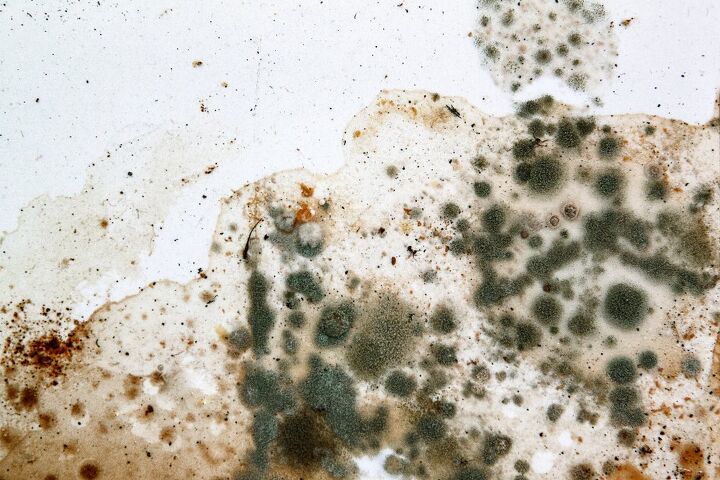






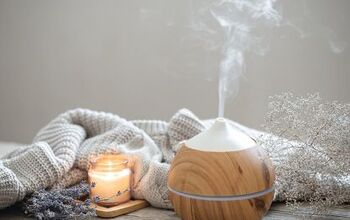
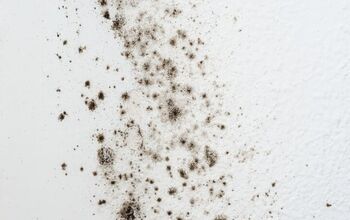
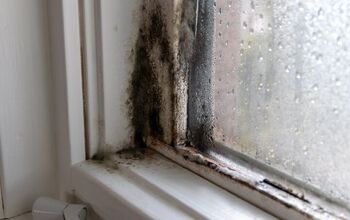
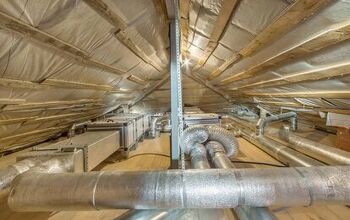

![How To Reset A Whirlpool Cabrio Washer [In 5 Easy Steps!]](https://cdn-fastly.upgradedhome.com/media/2023/07/31/9076531/how-to-reset-a-whirlpool-cabrio-washer-in-5-easy-steps.jpg?size=350x220)








![12 Washing Machine Brands to Avoid [with Recall Data]](https://cdn-fastly.upgradedhome.com/media/2023/07/31/9075781/12-washing-machine-brands-to-avoid-with-recall-data.jpg?size=350x220)


